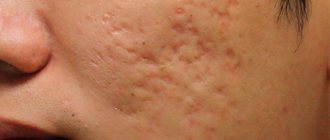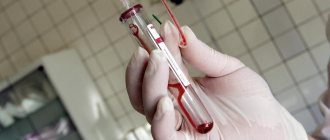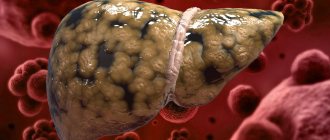In this article we will tell you what Amenorrhea is, the causes of its occurrence, what symptoms it is accompanied by and what treatment methods can be used.
Amenorrhea means the absence of menstruation or periods.
There are two types of amenorrhea: primary and secondary. When a girl reaches 16 years of age and does not have a period, she may have primary amenorrhea. When a woman who has her period but misses it three times in a row, she has secondary amenorrhea.
Amenorrhea occurs under certain circumstances, including during pregnancy, lactation (lactation amenorrhea), and menopause. Secondary amenorrhea is more common than primary amenorrhea.
Amenorrhea is a symptom of another condition, not the disease itself. Many things can cause this phenomenon, including body weight, hormonal imbalances in women, stress and problems with the pituitary gland. Usually the underlying condition is not serious.
General information
The female body is characterized by a clear menstrual cycle, implying regularly recurring changes of a physiological nature. These changes are regulated by the so-called five-link system (this is the cerebral cortex - hypothalamus - pituitary gland - ovaries - uterus ).
The menstrual cycle ends with the beginning of menstruation. When determining the duration of the monthly cycle, take into account the first day of the last menstruation, counting the days until the next one. In general, the average length of the menstrual cycle in women of reproductive age is 28 days. However, the cycle can vary, ranging from 21 to 35 days. Menstruation lasts from 3 to 7 days, and during this time a woman loses up to 150 ml of blood.
Physiological amenorrhea
- In girls before puberty (there is no cyclicity in the production of GT-RF due to the immaturity of the hypothalamic-pituitary-ovarian system).
- During pregnancy (against the background of high levels of progesterone and estrogens produced by the corpus luteum and placenta, cyclic processes in the ovaries and uterus stop).
- During lactation (hyperprolactinemia inhibits the growth and maturation of follicles and steroidogenesis in the ovaries).
- Menopause (the pulsatile rhythm of GT-RF secretion is lost).
Menstrual cycle disorders
If a woman experiences certain deviations from the cycle features described above, then in this case menstrual dysfunction occurs. Experts define two groups of such disorders: hypomenstrual syndrome and hypermenstrual syndrome . Such violations occur under the influence of many factors. These are, first of all, diseases and mental disorders, severe emotional shocks, neurological diseases, obesity , infectious diseases, cardiovascular diseases, and the influence of occupational factors. Menstrual dysfunction is also possible as a consequence of genetic diseases, hormonal imbalance, gynecological operations and some other factors. Sometimes several reasons are combined that provoke menstruation irregularities.
Amenorrhea: symptoms
As the reader has already been able to understand, the symptoms of amenorrhea consist in the absence of menstruation, as well as in manifestations corresponding to the reasons that led to amenorrhea. The consequence of the absence of menstruation is a violation of reproductive function, and, consequently, infertility. Thus, the main satellites of the syndrome we are considering are these indicated manifestations, regardless of the type of amenorrhea. Additionally, we note that infertility means the absence of pregnancy in a woman during a year of active and regular sexual activity, with the exception of the use of contraception.
False amenorrhea, provoked, as we found out, by actual anatomical disorders in which menstrual blood accumulates in the uterus, is accompanied by the appearance of cramping pain in the lower abdomen. The pain occurs during a period that, in principle, corresponds to the days of menstruation; the duration of such pain is approximately 2-3 days. At the same time, headaches, heaviness in the mammary glands and their enlargement, and nausea may occur.
Amenorrhea against the background of tumor formations of the pituitary gland is accompanied by the addition to the main symptoms of manifestations in the form of milk discharge from the mammary glands, as well as in the form of neurological symptoms (instability of moods, headaches, irritability, etc.).
Primary amenorrhea in combination with genetic abnormalities is characterized by underdevelopment of the genital organs. Girls with this type of pathology have an external disproportion in appearance, which in particular concerns tall stature, long legs and arms, and a short torso.
Secondary amenorrhea, developing against the background of endocrine disorders, may be accompanied by menopausal symptoms, which manifest themselves during the young reproductive age of patients (early menopause). This includes constant severe weakness, hot flashes, vaginal dryness, heart pain, etc.
With polycystic ovary syndrome, obesity is observed, insulin levels in the blood are elevated, excess hair growth (face, body), and acne on the face are common.
With prolonged manifestation of amenorrhea, osteoporosis subsequently develops. This disease, in turn, is accompanied by the leaching of calcium from the bones, due to which their structure changes, they become fragile and susceptible to fractures. Also, against the background of amenorrhea, the risk of developing vascular and heart diseases (atherosclerosis, coronary disease, etc.) increases.
Amenorrhea can reach a form of complication in which menstrual irregularities and infertility develop that are not amenable to any treatment options. Pregnancy with amenorrhea against the background of actual endocrine disorders is often accompanied by the threat of early miscarriage, the development of gestational diabetes or premature birth, and the appearance of signs of preeclampsia (protein in the urine, high blood pressure, etc.). A separate point is the increased risk of developing hyperplastic processes in the uterus in patients and the risk of developing endometrial cancer against the background of amenorrhea.
Types of amenorrhea
The concept of “ amenorrhea ” is used to define the condition of a woman who has not had her period for six or more months. In most cases, amenorrhea is not defined as an independent diagnosis, but is a symptom of certain diseases.
There are several types of amenorrhea, determined depending on the factors that influence its development. Physiological amenorrhea manifests itself before the onset of puberty in a girl, during pregnancy , during breastfeeding, and also during the menstrual break. Physiological amenorrhea is a natural condition that is not a disease. Pathological amenorrhea is a consequence of certain diseases that develop in women.
In addition, it is customary to define primary amenorrhea (in this case, menstruation does not appear in a girl under the age of 16), as well as secondary amenorrhea (menstruation appeared, but stopped under the influence of certain factors). The doctor considers the presence of pathological amenorrhea to be a rather alarming sign, which indicates the development of the disease or certain organic or functional disorders in the female body. Pathological amenorrhea can occur in women at any age.
False and true amenorrhea is also determined . In the case of false amenorrhea, the patient’s body experiences changes in the balance of hormones , which are characteristic of a normal monthly cycle. However, due to the presence of certain mechanical obstacles, blood cannot be released normally. A similar pathology can occur with atresia (that is, inflammation of the hymen or vagina). Sometimes false amenorrhea occurs in women who have congenital anomalies in the structure of the genital organs.
True amenorrhea is diagnosed if the patient does not have cyclic hormonal fluctuations. Consequently, ovulation does not occur in the female body, and the patient cannot become pregnant.
Signs and symptoms
Symptoms of primary amenorrhea may include:
- Headache;
- High blood pressure;
- Vision problems;
- Acne;
- Unwanted hair growth.
Symptoms of secondary amenorrhea may include:
- Nausea;
- Swollen breasts;
- Headache;
- Vision problems;
- Exhausted by thirst;
- Thyrotoxicosis (enlarged thyroid gland);
- Darkening of the skin.
Mood swings, depression, and vaginal dryness are associated with estrogen deficiency (female steroid hormones).
Lactational amenorrhea
When talking about lactational amenorrhea, experts mean the use of breastfeeding as a method of contraception. This method of preventing unwanted pregnancy is based on the fact that during active breastfeeding a young mother does not ovulate. However, this method of contraception is effective only in the first six months after childbirth. In this case, it is necessary to comply with a number of conditions - constantly feed the baby with breast milk at his request, breastfeed the baby at night. However, it should be remembered that such protection from pregnancy is always short-lived, and without additional methods of contraception there is a high risk of contracting sexually transmitted diseases and other infections.
What is menstruation?
To answer the questions posed above, you need to understand the nature of menstruation, find out what changes occur in the body on “these days”:
- From the moment of birth, follicles begin to mature in the ovaries.
- They are located in the ovaries, each of them contains an egg.
- During puberty (with the onset of menstruation, which usually occurs between the ages of 11 and 13), the follicles rupture and the egg is released into the fallopian tubes. This is called ovulation.
- Strictly speaking, the body is ready for conception. If fertilization does not occur, the egg is excreted from the body during menstruation.
Even if there is no pregnancy, the absence of menstruation does not always indicate pathology. Sometimes the body “takes a break,” but anovulation is more common, that is, menstruation without the release of an egg from the ovaries. Conceiving a child in such a situation is impossible, but a one-time failure, as a rule, does not mean the presence of a disease. A prolonged absence of menstruation as such (six months or more) indicates health problems, and it is necessary to consult a doctor. If you ignore examination and treatment, you can end up with infertility, and sometimes even miss the development of a serious illness, such as cancer.
According to ICD 10 disease code 91.0. Pathology is classified as a consequence of changes in the body that lead to the absence of menstruation for a long time.
Causes of amenorrhea
Primary amenorrhea in a woman can develop under the influence of genetic disorders, chromosomal abnormalities, and sexual underdevelopment. Sometimes this condition occurs in women with severe infectious diseases, as well as in patients who are obese due to dysfunction of the pituitary gland . The development of secondary amenorrhea is influenced by psychogenic factors, poor diet, severe exhaustion and fatigue of both a physical and mental nature, endocrine disorders, tumors and inflammatory processes in the genital organs.
The frequency of primary amenorrhea is relatively low, however, such pathology is a serious reason to contact a specialist.
Doctors identify several types of causes of amenorrhea. The anatomical causes of amenorrhea are determined in girls with a thin body type, undeveloped breasts, and a narrow pelvis. In this case, menstruation is absent due to the slow development of the girl’s body. But if such external developmental anomalies are not observed, then the reason for the lack of menstruation may be a pathology in the development of the genital organs. Most often, amenorrhea occurs due to the abnormal structure of the hymen. Such deviations can be determined by a gynecologist during examination.
Sometimes, in the process of examining and interviewing a patient who complains of lack of menstruation, the doctor determines that her female relatives had their first menstruation at a relatively late age - at 17 years or later. This situation indicates the presence of genetic factors that affect the menstrual cycle.
But in recent years, experts have shown that in most cases, the absence of menstruation is due to other reasons. We are talking about severe stress , serious upheavals of an emotional and psychological nature. About a third of girls (both those who have not yet started menstruation and girls with an established cycle) react this way to stressful situations. In some patients, the cycle is restored after some time without additional drug treatment. But in the presence of chronic diseases, drug therapy is often required.
In addition to these factors, the cause of menstrual dysfunction in women can be severe and constant physical activity, as well as anorexia . Therefore, doctors strongly recommend that all girls not to overdo it when choosing sports training methods for themselves and going on diets . Young girls can be significantly harmed by strength sports. However, no less significant harm comes from poor nutrition, when the body does not receive the necessary substances from the foods it consumes.
Secondary amenorrhea is a condition in which menstruation is absent for six months or more in women whose menstrual cycle was previously relatively stable. If we take into account medical statistics, about 10% of women of childbearing age suffer from secondary amenorrhea. Secondary amenorrhea is considered a more severe condition than the primary form of the disease.
Doctors also identify specific causes of this type of amenorrhea. Thus, the cessation of menstruation can provoke a sharp weight loss in a woman or constant strong physical activity. The factor causing secondary amenorrhea is polycystic ovarian disease . Menstruation may stop in women with certain pathologies of the uterus, under the influence of hypothalamic-pituitary disorders, as a consequence of diseases of the thyroid gland, adrenal glands, and tuberculosis . Sometimes amenorrhea is a consequence of taking certain medications or chemotherapy or radiation therapy. In addition, this form of amenorrhea occurs with premature menopause , hyperprolactinemia.
What Causes Amenorrhea?
The cause of both primary and secondary amenorrhea can be several reasons.
Primary amenorrhea
- Absence of reproductive organs such as the uterus, cervix or vagina;
- Problems with the pituitary gland;
- Anorexia;
- Stress;
- Too much physical activity;
- Abnormal chromosomes;
- Malnutrition.
Secondary amenorrhea
- Pregnancy or breastfeeding;
- Polycystic ovaries;
- Using several types of contraceptives at once;
- Using certain medications such as corticosteroids;
- Hormonal imbalance;
- Anorexia;
- Physical exercise;
- Problems with the thyroid gland;
- Pituitary tumor;
- Stress;
- Premature menopause (menopause before 40 years of age);
- Malnutrition;
- Autoimmune diseases (lupus, vasculitis, myasthenia gravis, autoimmune thyroiditis, etc.).
Diagnosis of amenorrhea
If a patient comes to the doctor with complaints about suddenly stopping menstruation, the doctor, first of all, conducts a survey and examination of the patient. In the process of talking with a woman, the specialist must find out some features of her life. In particular, it is important to find out whether the patient adheres to a certain diet, how often she exercises, whether there is serious physical activity, or constant stress. It is also important to find out how proportional the ratio of a woman’s weight and height is, and whether she is obese. Quite often, amenorrhea manifests itself as a consequence of obesity or dystrophy , since in this condition a woman often develops serious hormonal imbalances.
After the initial examination and interview has been carried out, the woman undergoes more detailed studies in order to establish the exact causes of amenorrhea. It is important to initially exclude pregnancy in a woman, after which an analysis of hormone levels in the blood and an ultrasound examination of the pelvic organs are performed. In the process of diagnosing amenorrhea, the doctor takes into account many different data: rectal temperature, results of a cytological examination of a vaginal smear, testing for the presence of gonadotropins in the urine and blood, etc. After making a diagnosis, the doctor prescribes therapy, taking into account the individual characteristics of the woman’s body.
Diagnostics
Consultation with a gynecologist
The doctor must collect information about diseases, lifestyle, heredity, assess the ratio of the patient’s height and weight, and also conduct an examination in a gynecological chair. In some cases, amenorrhea has characteristic symptoms, such as pupil syndrome.
The choice of other diagnostic measures depends on the suspected cause of amenorrhea.
Blood tests
This study allows us to determine the following:
- levels of follicle-stimulating and luteinizing hormone;
- thyroid hormone levels;
- prolactin level;
- the presence of antibodies to pathogens of infectious diseases, for example, chlamydia.
Doppler ultrasound of the pelvic organs
The method helps to establish the fact of cystic ovarian degeneration and see other anomalies. It is important to contact a qualified specialist, since ultrasound examination is one of the most operator-dependent studies.
MRI of the brain
The method is used when a malfunction of the pituitary gland is suspected. It should not be used unless necessary.
Treatment of amenorrhea with traditional methods
In some cases, treatment of amenorrhea with folk remedies can also be effective. However, it is very important not to practice such therapy without prior agreement with your doctor. In order for treatment using these methods to give a positive result, you should know exactly what reason triggered the occurrence of amenorrhea. To treat amenorrhea, you can use decoctions of some herbs and plants. A good effect can be obtained by consuming a decoction of stone fruit leaves for several weeks in a row. You need to drink the decoction before meals, twice a day.
Once a day, a woman can douche with freshly squeezed white cabbage juice. The procedure is best done before bedtime. You can prepare a foot bath by adding two tablespoons of vinegar, sea salt, and mustard powder to hot water. Baths lasting 20 minutes are taken in the morning and evening.
Traditional medicine also recommends using clove decoction. To prepare it, you need to take 40 clove inflorescences per 1 liter of water. The mixture must be cooked until then. Until half of the liquid has evaporated. Initially, the decoction is taken in small doses - one tablespoon three times a day. Later the dose can be increased.
For amenorrhea, you can also take a decoction of onion peels. It can be prepared by boiling the husks covered in water over low heat until they become dark in color. Drink the decoction twice a day before meals, one glass.
You can also try treatment with tampons soaked in chamomile oil or rosehip juice. These tampons are placed in the vagina overnight.
Regulation of the menstrual cycle
The thing is that the female body prepares for pregnancy every month.
Let's figure out what the monthly cycle is. 1. How to count days? The cycle is counted from the first day of menstruation and ends the previous day before the next menstruation. For example, on June 1 you started having spotting, after 3-6 days (normally) it stopped, and on June 30 it started again. This means your cycle is 29 days. And the next menstruation should be expected on July 29.
2. What happens to the body? The normal cycle is divided into 3 phases:
- In the first phase (follicular), your ovaries produce a lot of the female hormone - estrogen. Under its influence, the follicle with the future egg (female reproductive cell) grows, and the endometrial layer in the uterus gradually thickens, to which the baby will attach (if fertilization occurs). Normally, the duration of this period is from 7 to 21 days;
- the second phase - ovulation , takes only 1 day. A mature follicle bursts, and an egg emerges from it, which, in the normal state of the appendages, moves along the fallopian tube in search of sperm;
- the third phase is the luteal phase (phase of the corpus luteum). At the site of the burst follicle, this substance is formed, which produces the hormone progesterone, which prevents the future house (endometrium) from peeling off from the uterus. But the corpus luteum, again normally, can function from 12 to 14 days. When its strength ends, the endometrium leaves the uterine cavity and menstruation occurs. From its first day, a new follicle with an egg begins to grow. From all of the above, we must conclude that the normal duration of the cycle is 21 - 35 days.
3. What to do if your period does not come on the due day. There is no need to panic right away. If you have had sexual intercourse, take a pregnancy test. The result is negative - visit an obstetrician-gynecologist. Perhaps this is just a hormonal imbalance, because we are all living people. But it is necessary to exclude bad suspicions.
Causes
Primary amenorrhea develops as a result of psycho-emotional, hereditary and anatomical factors. As a rule, some relatives of a teenager began menstruation after the age of 17. Also, primary amenorrhea can be a symptom of Turner syndrome (underdevelopment of the gonads with abnormal development of sex chromosomes). Other reasons for this deviation are the girl’s anatomical features (narrow pelvis, thinness, low weight, underdeveloped breasts, closure of the vaginal canal or hymen, etc.).
Menarche (first menstruation) with pronounced virilization (male-type figure, excessive growth of body hair, roughness of voice) may be absent against the background of disturbances in the functional activity of the adrenal cortex or neoplasms in the ovaries and adrenal glands during puberty.
The most common causes of primary amenorrhea are stress, emotional turmoil, anorexia nervosa and exhausting workouts. All these factors can ultimately affect the development of a teenager’s menstrual function.
Secondary amenorrhea occurs in 1 in 10 women aged 17-45 years. The causes of its occurrence can be the following diseases:
- Anorexia and bulimia. As a rule, amenorrhea in these cases becomes a consequence of exhausting diets in combination with a mental disorder. Patients diagnosed with anorexia and bulimia are overwhelmed by an obsessive desire to lose weight, no matter what (taking laxatives, fasting, inducing vomiting, etc.).
- Dysfunctional uterine bleeding. These discharges are associated with a disruption in the production of sex hormones by the endocrine glands.
- Inflammatory or infectious processes in the pelvic organs (vaginitis, salpingoophoritis, oophoritis, bartholinitis, parametritis, etc.). With these diseases, a woman experiences pain in the lower abdomen, fever, and vaginal discharge of a specific color.
- Polycystic ovary syndrome. This disease is characterized by excess body hair growth, acne, metabolic disorders, amenorrhea and infertility.
- Early menopause. This deviation is observed in women under 40 years of age as a result of insufficient ovarian function. Prolonged stress may be the cause of early menopause.
- Fatigued ovarian syndrome (cessation of ovarian function in women under 40 years of age).
- Sexually transmitted diseases.
- Brain tumor or prolactinoma (pituitary adenoma and microadenoma, tumor neoplasm in the pituitary gland).
- Hyperprolactinemia. In this condition, the level of the hormone prolactin increases, which leads to problems with the regularity of the menstrual cycle and discharge from the mammary glands.
- Cysts formed in the ovaries. In this situation, both drug treatment and surgical intervention may be prescribed.
Sometimes amenorrhea occurs as a result of severe nervous shock. Then menstruation returns on its own, after some time. But in most cases, amenorrhea requires professional treatment.
Diagnosis of amenorrhea
- gynecological examination,
- Ultrasound of the pelvic organs,
- karyotyping (determination of chromosome structure) – required for primary amenorrhea,
- blood test for hormones (FSH, LH, estradiol, prolactin, TSH, T3, T4, free testosterone in PCOS),
- for women with obesity and PCOS, a glucose tolerance test, a blood test for sugar and determination of insulin levels are also recommended,
- if a tumor of the pituitary gland is suspected, a consultation with a neuropathologist, CT, MRI of the brain, x-ray of the sella turcica is prescribed,
- if an adhesion in the genital organs is detected, hysteroscopy is prescribed,
- for PCOS, therapeutic and diagnostic laparoscopy is indicated,
- For some endocrine diseases, tests using certain hormones may be required.
Attention should be paid to amenorrhea that occurs while taking oral contraceptives. Menstrual-like bleeding that occurs during breaks between taking pills lasts less than true menstruation, the volume of discharge is also reduced . If, while taking contraceptives, menstrual-like bleeding does not occur in due time, you should contact a gynecologist about changing the drug.
Central disorders
Hypothalamic disorders
The pituitary gland does not release FSH and LH unless the hypothalamus produces GnRH, transports it to the pituitary gland, or does not release it in a pulsatile manner. Anovulation and amenorrhea occur due to hypogonadotropic hypogonadism.
Kallmann syndrome involves a congenital absence of GnRH and is often associated with anosmia (loss of the ability to smell).
GnRH transport may be impaired due to compression or destruction of the pituitary stalk or arcuate nuclei. This may be a consequence of the influence of tumor masses, trauma, sarcoidosis, tuberculosis, radiation, or Gend-Schiller-Christen disease.
Defective GnRH pulsatile release may occur in anorexia nervosa, excessive stress, excessive exercise (types), hyperprolactinemia, and constitutional delay of pubertal development.
Pituitary disorders
A primary pituitary defect is a rare cause of primary amenorrhea. Pituitary dysfunction is usually a consequence of hypothalamic dysfunction. These disorders can be caused by tumors, infiltrative processes in the pituitary gland, or pituitary infarction. Surgery or radiation for pituitary tumors often results in decreased or absent LH and FSH secretion. Hemosiderosis can cause iron deposition in the pituitary gland, which leads to impaired production of the gonadotropes FSH and LH.
Diagnostics . Patients with primary amenorrhea are subject to examination according to the characteristics of the phenotypic picture - the absence or presence of the uterus and the absence or presence of mammary glands. The absence of a uterus is observed in the presence of testicles (with a genetic male sex) due to the production of Müllerian inhibitory factor or with Müllerian agenesis (with a genetic female sex). The development of mammary glands depends on the presence of estrogen secretion by the ovaries.
Patients who do not have a uterus and developed mammary glands are usually genetically male with a defect in steroid synthesis or various degrees of gonadal dysgenesis, in which there is adequate production of Müllerian inhibitory factor by gonadal tissue, but the synthesis of androgenic steroids is insufficient.
If the mammary glands are developed and the uterus is absent, the etiology of these conditions may include congenital absence of the uterus (Müllerian agenesis) in women or testicular feminization in men. In the latter case, estradiol is produced both directly by testicular tissue and by peripheral conversion of testosterone and androstenedione, which causes the development of mammary glands.
For patients with a uterus but no breast development, the differential diagnosis includes the following conditions:
1) hypergonadotropic hypogonadism (gonadal dysgenesis in both sexes, defect in steroid synthesis in persons with 46, XX);
2) hypogonadotropic hypogonadism, which may be a consequence of central, hypothalamic or pituitary dysfunction.
For the purpose of differential diagnosis of these two conditions, the level of FSH in the blood serum is determined. An increased level of FSH indicates hypergonadotropic hypogonadism, a reduced or normal level of FSH indicates prohypogonadotropic hypogonadism.
Examination of patients with a female phenotype and primary amenorrhea in the absence of the uterus and mammary glands includes analysis of karyotype, testosterone and FSH levels. Special tests are performed to identify enzyme defects. Patients with a uterus and mammary glands are examined for obstructive abnormalities of the reproductive tract. If there are no abnormalities in the structure of the vagina, cervix and uterus itself, patients are examined as with secondary amenorrhea.
Treatment . Patients with congenital anomalies of the reproductive tract are subject to reconstructive surgical operations (hymenotomy, resection of the vaginal membrane, colpopoiesis and neocolpopoiesis) to allow the release of menstrual blood with a functioning uterus or the creation of a functional vagina.
Patients with an absent uterus and mammary glands should be treated with estrogen replacement therapy to stimulate breast development and prevent osteoporosis. Patients with developed mammary glands in the absence of a uterus may not require therapeutic intervention.
Patients with a uterus but no breasts and hypergonadotropic hypogonadism often have irreversible ovarian failure and require estrogen replacement therapy. Patients with hypogonadotropic hypogonadism require further examination according to the diagnostic algorithm for secondary amenorrhea.
Treatment
In most cases, treatment of amenorrhea is accompanied by the prescription of a course of hormonal medications that can replace the lack of necessary hormones and improve the functioning of the pituitary gland, hypothalamus and normalize the production of hormones by the ovaries.
With proper treatment, it is possible to get rid of secondary amenorrhea, but the primary form requires more careful correction by a doctor.
Amenorrhea means a woman's inability to conceive, so the main goal is to restore fertility. After determining the true cause of amenorrhea, treatment is prescribed. Treatment of amenorrhea includes hormone therapy in conjunction with physical therapy.
- Amenorrhea associated with sudden weight loss is treated with diet therapy. After restoration of normal body weight, menstruation is restored.
- In case of obesity, on the contrary, recovery is achieved through weight loss.
- For congenital anomalies, operations are performed, for example, creating a vagina in the absence of one or cutting the hymen.
- With polycystic ovary syndrome, it is important to reduce the symptoms of increased androgen production and restore ovulation. For this purpose, contraceptives and drugs that reduce the synthesis of androgens in the adrenal glands and ovaries are used.
To treat the primary form, the following methods of eliminating it are suggested:
- Correction of mental states;
- Vitamin therapy;
- Diet food;
- Relief from stressful conditions and strengthening the nervous system;
- Hormonal therapy;
- Surgical intervention.
For the treatment of the secondary form, both the above measures and the following are predetermined:
- Lifestyle changes;
- Taking hormonal drugs;
- Compliance with the work and rest regime;
- Refusal to lose weight.
Amenorrhea: treatment
It’s worth saying right away that treatment directly depends on what exactly caused the disappearance of menstruation, because amenorrhea is not a disease, but rather a symptom of it.
For example, if the cause is a disruption of normal hormonal levels, then the patient is selected appropriate hormonal therapy, which may include:
- estrogens, in particular “Divigel”, “Proginova”, “Folliculin” - these drugs are suitable both for the presence of endocrine diseases in women and for normalizing the process of puberty in teenage girls;
- gestagens, which are also used to treat both forms of the disease (for example, Duphaston, Norkolut, Utrozhestan);
- gonadotropin-releasing hormone analogues;
- combined ectrogen-progestogen oral contraceptives.
The duration of hormonal therapy may vary. Some drugs are used in courses to stimulate ovulation (for example, in the treatment of infertility), while others must be taken continuously to support the menstrual cycle until the onset of menopause.
Along with this, doctors sometimes prescribe certain homeopathic medicines, in particular Mastodinon, Remens or Klimadinon. These medications have a gentle effect on the hypothalamic-pituitary system, gradually normalizing the menstrual cycle, are well tolerated by patients, and also have a sedative effect.
In some cases, other treatment methods are required. For example, in the presence of brain tumors, surgical removal, radiation or chemotherapy is required - only after this is hormonal treatment to restore the menstrual cycle. In the presence of adhesions and anatomical defects, surgical intervention is also necessary to remove mechanical obstacles and menstrual fluid. The presence of polycystic disease is an indication for laparoscopy - this is a microsurgical operation during which the doctor removes cystic tumors. Upon completion, the patient is prescribed hormonal medications. According to statistics, with timely treatment, women manage to become pregnant and successfully carry a child in the future.
In the event that amenorrhea is caused by some changes in regimen or lifestyle, it is necessary to eliminate all risk factors. For example, patients are advised to avoid stress and, if necessary, take mild sedatives.
If the cycle disruption is caused by a strict diet or intense physical activity, then the patient is prescribed a special balanced diet and rest in order to regain strength. If, on the contrary, a woman has gained weight too quickly and there is a risk of metabolic disorders or the development of diabetes, then a diet and a set of physical exercises are also prescribed, which are aimed at normalizing the processes of digestion, absorption of nutrients and combating excess weight. If, after several months of a maintenance regime, menstruation has not been restored naturally, the patient is selected with appropriate hormonal medications. This is the only way to eliminate amenorrhea. Treatment in any case will take a little time.
Prevention of amenorrhea
The main prevention to avoid this dangerous syndrome is normalization of lifestyle.
1. Adequate work and rest regime - sleep at least 8 hours a day, breaks at work, relaxation. Try not to get overtired.
2. Giving up bad habits (alcohol, smoking, drug addiction).
3. Balanced nutrition - normalization of the ratio of proteins, fats and carbohydrates. Products should be rich in various vitamins. The following have a particularly positive effect on the female body:
- vitamin A (chicken and quail eggs, beef liver, fish, pumpkin, cheese, broccoli, carrots);
- vitamin B9 or folic acid (baker's yeast, herbs - dill, parsley, cilantro, sorrel, spinach, leeks, asparagus);
- vitamin C (cabbage, citrus fruits, rose hips, black currants, celery);
- vitamin E (almonds, hazelnuts, cod oil).
4. Body mass index (BMI) must be closely monitored . It is calculated using the following formula: body weight in kilograms must be divided by height in meters squared. The normal BMI is from 18.5 to 25. For example: height 172 cm, weight 61 kg (1.72*1.72=2.9584; 61/2.9584=20.62) – normal BMI. Obesity, like dystrophy, negatively affects hormonal regulation and can be the main cause of menstrual irregularities.
5. Avoid excessive physical activity . You need to approach sports competently and without unhealthy fanaticism, gradually increasing the intensity and duration of exercise.
6. And most importantly, never take hormonal medications without consulting a doctor .
Not so long ago, vitamin complexes were developed to maintain a regular menstrual cycle. For example, the drug Cyclovita. It includes 2 types of tablets. Each of them contains different types of vitamins that have a positive effect on a specific phase. The package contains 42 tablets, some are pink, others are green. From the 1st to the 14th day you need to take one piece, from the 15th to the 28th day - 2 pieces. In addition to restoring the functioning of the ovaries, such dietary supplements help normalize the duration of the cycle, which is also very important. Tsiklovita's research was carried out at the Ivanovo Research Institute of Motherhood and Childhood named after V. N. Gorodkov. The vast majority of women who took part in the observation noted the beneficial effect of the drug on the body. But taking vitamin complexes is not a treatment for amenorrhea that has already occurred. They can only be used as adjunctive therapy.
Prevention
Preventive measures are aimed at maintaining a calendar of the menstrual cycle to accurately determine the first signs of the disease. Polycystic ovary syndrome requires:
- nutrition tracking;
- fractional meals;
- moderate physical activity.
In the absence of menstruation due to hormonal imbalance, prevention includes a set of measures to prevent the progression of the underlying disease. Seeing a doctor earlier is also a way to prevent progression of the pathology.
During pregnancy and the lactation period, a woman should monitor her health and avoid stress and overexertion. Menstruation is restored after the cessation of regular feeding of the child and the introduction of the first complementary foods. The cycle, which is irregular at first, eventually returns to its normal course; if this does not happen, the condition can smoothly turn into amenorrhea against the background of a secondary pathology of the reproductive system. If the cycle is not restored within six months after the cessation of the lactation period, you should seek help from a doctor.
Prevention of adnexitis is aimed at wearing high trousers, reducing the risk of hypothermia and contracting a sexually transmitted infection. With a significant increase in the size of the ovary or pronounced sclerotic changes, the likelihood of spontaneous rupture of the ovarian capsule increases, which is fraught with the subsequent development of peritonitis. The disease is life-threatening and requires urgent surgical treatment. This condition can be prevented by limiting physical activity, being careful during sexual intercourse, and wearing loose clothing that does not compress the lower abdomen (compression leads to sprained ligaments, separation of sclerotic fallopian tubes and ovaries). Prevention of secondary amenorrhea includes:
- body weight tracking;
- consumption of fiber, vegetables and fruits.
Polyunsaturated fatty acids have a beneficial effect on the maturation of the egg, providing energy resources to the cells of the woman’s reproductive system. Fast carbohydrates negatively affect insulin metabolism; limiting sweet and fatty foods stimulates natural processes in the body that stimulate pregnancy. Physical activity improves heart function, ensures oxygen saturation of tissues and cell maturation, including a positive effect on a woman’s health and her ability to conceive.
Consequences
True amenorrhea can cause a number of possible consequences and complications in women. Among them:
- infertility;
- osteoporosis;
- premature menopause or “age-related” diseases;
- uterine cancer;
- hyperplasia of the uterine endometrium.
Patients may experience other complications, the occurrence of which directly depends on the pathology that caused the development of amenorrhea.
What is amenorrhea in women? This is a serious change in the functioning of the reproductive system, which is important to diagnose in time and begin treatment.
The article was checked by doctor Elizaveta Anatolyevna Krizhanovskaya About our authors and experts.
Degrees of amenorrhea
Depending on the duration of absence of menstruation, amenorrhea is divided into 3 degrees of progression:
- Easy. Characterized by menopause for 6-12 months. Timely diagnosis and treatment can completely get rid of the troubling problem.
- Average. In this situation, amenorrhea lasts for 3 years. The consequence of this deviation is vegetative-vascular complications.
- Heavy. The absence of menstruation for more than 3 years is accompanied by an increase in the size of the uterus and problems with the vascular system. It is almost impossible to cure such amenorrhea.
Is it possible to get pregnant with amenorrhea?
Untreated amenorrhea can lead to the development of infertility. But while the disease is at an early stage, it is possible to resort to treatment with hormonal drugs or artificial insemination .
Along with certain diseases, the appearance of vegetative-vascular dystonia, diabetes or oncology can be observed. The sooner a woman begins treatment for amenorrhea, the easier it will be for her to become pregnant.
Very often with amenorrhea there is no ovulation. In this case, its stimulation using hormonal drugs is indicated. In the first half of the cycle, tablets are taken that stimulate the growth of follicles and endometrium. In the middle of the cycle, an hCG injection is given. In the second half of the cycle, the woman should take a progesterone-containing drug.
IMPORTANT! The dosage of medications is prescribed exclusively by the attending physician.
If ovulation stimulation does not bear fruit, a diagnostic operation called laparoscopy is indicated. It does not belong to the abdominal type of surgical intervention . Instruments with a camera are inserted into the abdominal cavity, with which you can see the cause of amenorrhea. In the case of polycystic disease, incisions are made in the ovarian area. If endometriosis, fibroids or cysts are present, the formations are removed.
Very often, women become pregnant after surgery . In some incidents, IVF assistance may be needed. But in any case, getting pregnant with amenorrhea is quite possible. It is important not to delay your visit to the gynecologist and follow all his recommendations.
Pathologies of the reproductive organs
In addition to the fusion of the hymen, girls may have other causes of primary amenorrhea. So, for example, a girl may have a pathology of the reproductive organs: either their underdevelopment or the complete absence of the uterus. It should be noted that the ovaries often function normally, follicles are produced, menstrual flow occurs, but does not come out - they accumulate in the cavity.
It is important to see a doctor in time. As a rule, after an examination, he diagnoses the problem, cleans the cavity of secretions if necessary, and selects a treatment regimen depending on the diagnosis.
- For example, in case of an underdeveloped uterus, they offer an operation where an organ is created artificially.
After the menstrual cycle has been established, the doctor plans treatment to restore reproductive function.
Sexual underdevelopment
Parents should be wary if a teenage girl aged 15-17 has underdeveloped mammary glands and no hair in certain areas.
These symptoms indicate that the girl is lagging behind in sexual development. It is important to choose hormonal medications in time to improve the functioning of the adolescent’s reproductive system. Only a doctor can do this. With the right treatment, the girl catches up with her peers in development, and menstruation begins. This problem cannot be solved without hormonal drugs.
I would also like to note that primary amenorrhea is not always diagnosed correctly. A girl's menstruation occurs later than others. And this may be due to the developmental characteristics of the girl herself.
About treatment
The main treatment is aimed at eliminating the cause of this condition.
- If the reason for the cessation of menstruation is gynecological in nature, it is important to choose the right hormonal medications. Depending on what hormones the female body lacks, the doctor prescribes estrogens, progestins, selects oral contraceptives (COCs) if necessary, as well as drugs that stimulate the ovaries, or recommend herbal analogues.
How to choose the right hormonal contraceptives, read here
We will not talk about what medications should be taken to treat amenorrhea. This should be done by a doctor. Remember, with the right treatment, this problem can be solved.
- If the failure is associated with a tumor in the brain, surgery, hormonal or hormone replacement therapy will be required.
- If problems are related to weight, a nutrition plan is selected. In some cases you need to gain weight, in others you need to lose it. You also need to take vitamins during this period.
- If the cause of amenorrhea is caused by severe stress, sedatives are prescribed and psychotherapy is performed. Sometimes in such cases no treatment is required, time just needs to pass.
Congenital pathology of the hymen
In adolescents, the reason for the absence of menstruation can be a congenital pathology of the hymen. It is important to understand that the formation of the hymen occurs during the formation of the fetus at the 19th week of pregnancy.
- If there are failures in the formation of the hymen during intrauterine development, it becomes fused, that is, there is no hole in the septum.
- Also, this pathology can be a consequence of diseases the girl has suffered, such as measles, scarlet fever, diphtheria, as well as previous gynecological diseases, the complications of which can be adhesions or scars in the uterus.
After examination and confirmation of the diagnosis, the girl’s hymen is surgically cut. The bloody discharge that has accumulated in the vagina during this time is removed, completely freeing the uterus from mucus - cleaning is carried out. This operation is performed under anesthesia. To prevent re-merging, special sutures are placed on the edges.











